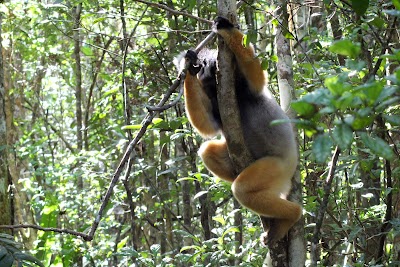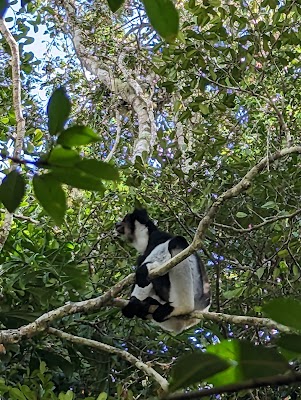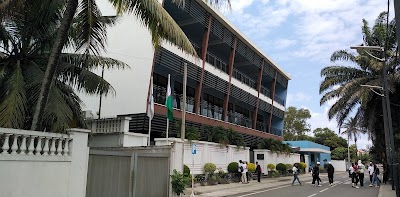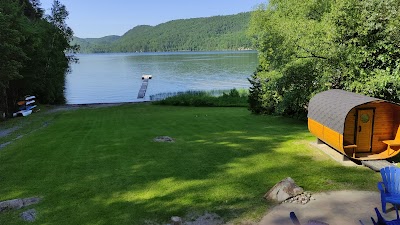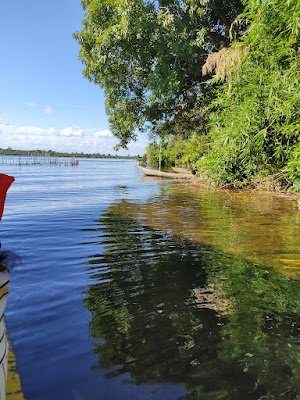Analamazaotra Special Reserve (Fikambanana Manokana Analamazaotra)
Overview
Introduction to Analamazaotra Special Reserve
Nestled in the lush eastern rainforests of Madagascar, the **Analamazaotra Special Reserve (Fikambanana Manokana Analamazaotra)** is a captivating destination that beckons nature enthusiasts and adventure seekers alike. Located near the bustling town of Andasibe in Toamasina Province, this reserve is part of the larger Andasibe-Mantadia National Park, often referred to as the gateway to Madagascar's unique biodiversity. Encompassing around 810 hectares, Analamazaotra is renowned for its rich flora and fauna, making it an essential stop on any itinerary for travelers keen to experience the island's extraordinary ecosystems.
The reserve is particularly famous for being one of the best places to spot the iconic **Indri Indri**, the largest living lemur species. With its striking black and white coat and hauntingly beautiful calls that echo through the forest, the Indri is a symbol of Madagascar's unique wildlife. Visitors to Analamazaotra can embark on guided treks through the dense understory of the rainforest, where expert local guides will lead you to the best lemur-watching spots. The early morning is particularly magical, as the sun filters through the canopy, and the calls of the Indri herald the start of a new day.
Flora and Fauna
In addition to its famous lemurs, Analamazaotra boasts an impressive array of biodiversity. The flora here is equally captivating, with towering eucalyptus trees, vibrant orchids, and a variety of ferns that create a stunning tapestry of green. The reserve is home to over **100 species of birds**, many of which are endemic to Madagascar, making it a birdwatcher’s paradise. Keep an eye out for the striking **Madagascar Blue Pigeon** and the elusive **Nuthatch Vanga** as you explore the forest trails.
The rich ecosystem also supports a variety of reptiles, amphibians, and insects, including the fascinating chameleons that change color to blend into their surroundings. As you venture deeper into the reserve, you may even encounter the playful **Sifaka**, another species of lemur known for its unique way of moving by hopping sideways on the ground. The diversity of life in Analamazaotra is a testament to Madagascar's status as one of the world's leading biodiversity hotspots.
Exploring the Reserve
Visiting Analamazaotra Special Reserve is an immersive experience that allows travelers to connect with nature in one of its most pristine forms. The reserve offers several well-maintained trails that cater to different fitness levels, ranging from leisurely walks to more strenuous hikes. Guided tours are highly recommended, as local guides not only help spot wildlife but also share their wealth of knowledge about the ecosystem, conservation efforts, and the cultural significance of the area.
Don't forget to pack your binoculars and a good camera, as the variety of landscapes—from thick forests to open grassy clearings—provides countless opportunities for stunning photographs. The best time to visit is during the dry season, from April to October, when the weather is cooler and wildlife is more active.
Conservation Efforts
While visiting Analamazaotra, it’s important to recognize the ongoing conservation efforts that help protect this unique ecosystem. Madagascar is facing significant environmental challenges, including deforestation and habitat loss. By choosing to explore reserves like Analamazaotra, travelers can contribute to local economies and conservation initiatives aimed at preserving the island's extraordinary wildlife for future generations.
In conclusion, a visit to the Analamazaotra Special Reserve offers a unique blend of adventure, education, and awe-inspiring natural beauty. Whether you're a seasoned traveler or embarking on your first eco-adventure, this enchanting reserve promises memories that will last a lifetime. So lace up your hiking boots, grab your camera, and prepare to be amazed by one of the most biodiverse places on our planet!


